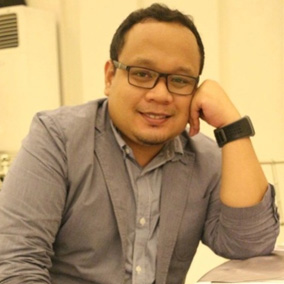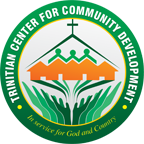Service-Learning in the “New Normal”: Insights for Engaging Tertiary-Level Students to Complete Their Community-based Learning Experiences
PERSPECTIVE by DIVINO L. CANTAL Jr.
 The COVID-19 pandemic created a tremendous impact to the education sector around the world. From the traditional face-to-face, in-classroom classes, professors have to shift to virtual learning abruptly, making good use of the available technologies in their locality. Working, and studying, from home has become the new normal. While there are still a lot of debate about its viability, educators and learners do not have much choice in the upcoming school year. Physical distancing is a must, and governments are strict in the implementation of safety measures to avoid contracting the virus. Many universities have already begun their shift to online classes and blended learning. In this scenario, students and professors need not come to their classrooms but instead, modules will be given online to facilitate the learning of the students and meet the courses’ objectives.
The COVID-19 pandemic created a tremendous impact to the education sector around the world. From the traditional face-to-face, in-classroom classes, professors have to shift to virtual learning abruptly, making good use of the available technologies in their locality. Working, and studying, from home has become the new normal. While there are still a lot of debate about its viability, educators and learners do not have much choice in the upcoming school year. Physical distancing is a must, and governments are strict in the implementation of safety measures to avoid contracting the virus. Many universities have already begun their shift to online classes and blended learning. In this scenario, students and professors need not come to their classrooms but instead, modules will be given online to facilitate the learning of the students and meet the courses’ objectives.
With such predicament, there is a bigger challenge to schools and universities that are subscribed to Service-Learning – If we are not allowed to physically meet our students, how do we engage them to Service-Learning activities in the new normal? How do our students complete their community-based learning experiences if they will be prohibited to render services to partner communities?
Many universities around the world have adopted the pedagogy of Service-Learning in the teaching of the courses they offer. Service-Learning is the integration of the service component aligned with the objectives of the course to communities who have the need for such service. Reciprocally, communities informally educate the students through sharing of local knowledge and practices which may not be taught in the classrooms. Students also learn from their service experiences which are vital to their personal development (Bringle and Hatcher, 1995). The integration of the service component in the academic teaching improves the students’ higher-order cognitive skills, such as analytical reasoning and critical examination of issues and ideas (Eyler and Giles, 1999), and a deeper sense of civic responsibility which prepare them to become more caring and responsible citizens of their countries (Larson-Keagy, 2002). In most universities, Service-Learning is embedded in their Mission and Vision.
Normally, in a regular semester before this pandemic, students enrolled in Service-Learning courses are prepared for service engagement in a partner community at the start of classes. Throughout the semester, they are guided to plan, organize, and lead a program or project that is anchored to the needs of chosen community. These include several visits to the partner communities and developing relationships with the residents. At the end of the semester, they implement the program or capstone project to the community and are evaluated by both the teacher and community leader or coordinator. A reflection, usually in a form of writing, is submitted to gauge the learning of the students based on the objectives of the course.
In the new normal, this may not be possible anymore. Learners may be prohibited to visit communities, more so render physical services to them. Interaction among students and teachers is also limited online, thus logistics may also not work. And if they decide to the Service-Learning activities virtually, there will be questions on the readiness of both the server and the served, particularly the latter, to the relevantly new technology because of the digital divide especially in less developed countries.
So how do we conduct Service-Learning in the new normal? First, we have to acknowledge that not all courses are the same. There are some courses where direct service is vital to the teaching of the course, say Community Health Nursing (CHN) and Clinical Duty for the B.S. Nursing program or the Community and Public Health (CPH) for the B.S. Medical Technology program. There are also some courses which can be more relaxed in the implementation of Service-Learning, like Development Communication of the B.A. Communication program and the National Service Training Program (NSTP), which is a General Education course taken by students from all programs.
CHN, Clinical Duty, and CPH cannot do away without the service component. While teachers can provide videos and lecture guides to help the students understand concepts in their respective fields, there is no guarantee that they will acquire the necessary skills and the confidence needed in the performance of tasks in clinical laboratories. In these courses, the conventional face-to-face interaction is important. If students were to be sent to the field, their safety should be prioritized. Wearing of Personal Protective Equipment (PPE) may be a must for students who are rendering clinical duties and serving the communities.
Development Communication, NSTP, and similar courses, on the other hand, may utilize the other forms of Service-Learning such as indirect service, advocacy, and research. These types of services have minimal or no physical interaction with the community they are serving. For example, Broadcasting students can produce a Public Service Announcement (PSA) or a video related to a particular advocacy and share it in social networking sites. Business Management students can organize Facebook groups to give micro-entrepreneurs in partner communities a venue to sell their products. Education students can develop learning materials and distribute to parents of pre-school and elementary pupils who have difficulty accessing the internet in the blended learning scheme. These are already considered as a form of service and does not need direct contact with the ‘served.’
Second, there is no hard rule in the implementation of Service-Learning. Each course can be flexible in the integration of the service component in their lessons. In the planning stage, the teacher and the students can decide on how much weight they are going to give to the service component. It could be the culminating or final project of their course, or it could also be just a “quiz.” It can also be a class project (which may not be possible in Flexible Learning Option), group, or an individual requirement. In many universities abroad, this flexibility is brought by the relative freedom given by the teachers to let the students drive the direction of the course. Both the teacher and the students should feel free to explore the wonderful world of Service-Learning.
Lastly, the definition of community may be tweaked to include not just the formal communities the universities partnered with, but also the immediate environments of the students. These may include, but not limited to their family and neighborhood, non-government organizations, minority groups, online groups, people with similar needs, and the like. Just a word of caution to teachers and students, it is important to know the needs of their “community” and how the course is aligned into it. It shall be the responsibility of the teacher to validate the “community” their students are serving. Projects may also be short term in the meantime, while we are still in transition, unlike in the old normal where there is continuity in project in partner communities.
The pandemic may have changed the landscape of how we learn but the purpose of education remains the same – that is for the students to be able to apply what they have learned for the greater good of the community. It is a must that teachers and learners adapt to the new normal. As Charles Darwin said, it is not the most intellectual and the strongest of the species that survive but the one that is able to adapt and adjust to the environment in which it finds itself.
_______
 DIVINO CANTAL Jr. is the Coordinator of the Service Learning Program and an Assistant Professor at the Media and Communication Department of Trinity University of Asia. He is teaching Development Communication, Values Communication, Social Media Principles and Practices, and Multimedia Production.
DIVINO CANTAL Jr. is the Coordinator of the Service Learning Program and an Assistant Professor at the Media and Communication Department of Trinity University of Asia. He is teaching Development Communication, Values Communication, Social Media Principles and Practices, and Multimedia Production.
.
_______
References
- Bringle, R., & Hatcher, J. (1995). A service learning curriculum for faculty. Michigan Journal of Community Service Learning, 2, 112-122
- Eyler, J. and Giles, D. (1999) Where’s the learning in service-learning. San Francisco, California: Jossey-Bass.
- Larson-Keagy, Elizabeth (2002). Civic responsibility and service learning: the need for curricular integration. The Journal for Civic Commitment: http://ccncce.org/articles/civic-responsibility-and-service-learning-the-need-for-curricular-integration/Interviews:
- Dr. John Michael Lorena, Dean of St. Luke’s College of Nursing, TUA (May 17, 2020)
- Prof. Violie Bascao, Academic Head, College of Medical Technology, TUA (May 18, 2020)
- Prof. Homer Balmes, NSTP Head, TUA (May 17, 2020)


 The Trinitian Center for Community Development is the official arm for Community Extension Service that supports Trinity University of Asia in carrying out its Vision and Mission of involving her constituents to live a LIFE that is GOD-centered and in service to the community.
The Trinitian Center for Community Development is the official arm for Community Extension Service that supports Trinity University of Asia in carrying out its Vision and Mission of involving her constituents to live a LIFE that is GOD-centered and in service to the community.